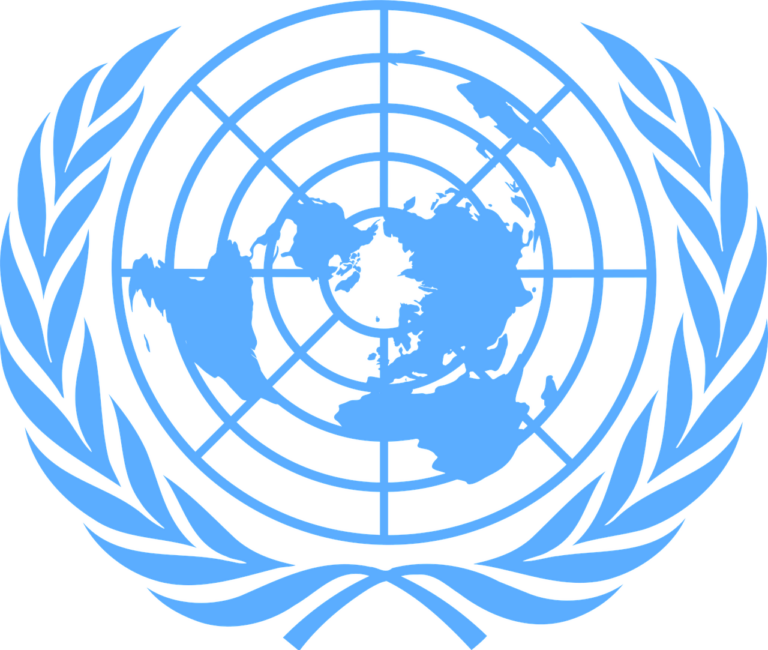AI for Green Initiatives
AI holds immense potential for advancing climate commitments. When applied responsibly, ‘AI for Green’ can significantly enhance the sustainability of our societies. Combined with efforts to mitigate the negative impacts of AI, this approach could drive substantial progress toward both ecological and digital transitions.
For the common adoption of AI solutions which greatly increase environmental sustainability, this inventory of AI use cases brings visibility to AI for Green collaborative projects that aim to meet environmental goals.
These projects were selected following consultation with members of the Coalition for Sustainable AI. They are organised into sub-categories derived from the United Nations Sustainable Development Goals, which correspond to the issues they address.
Decarbonized Energy
Predict carbon from landfills
This initiative aims to predict carbon resources in landfills for renewable energy storage, offering essential tools and datasets to support sustainable development in overcrowded African cities.
Case studies collection of AI deployment across energy sector
Creation of a library of AI use cases in the field of energy, as part of the “Energy and AI” report (April 2025).
Project Sunroof
AI-driven solution that aims to make the process of installing solar panels easier and more understandable for people, by using Google Maps data.
Agriculture and Food
Accelerator Labs Network
Using AI to analyze Earth observation data (satellite data and drone data) for crop disease detection, waste monitoring, and land use mapping.
Optimize fertilizer usage
Provide real-time, lab-accurate soil data and AI-driven, actionable recommendations, helping farmers improve yields while cutting fertilizer costs and carbon footprints.
Agrifood Systems Technology and Innovation Outlook (ATIO)
ATIO has two key components: a biennial publication starting in 2025, compiling the latest developments in science and technology relevant to agrifood systems, and an open-source database dedicated to technologies and innovations for agrifood.
AI in Crop Yield Forecasting
In collaboration with a private plantation company in Sri Lanka, the Global Green Growth Institute (GGGI) is working to enhance sustainable agricultural practices and boost economic resilience for local communities, by forecasting tea and intercrop yields, revenue, and financial metrics.
Agricultural AI agents
Develop a collaborative tool to generate AI agents specialized in agriculture, offering an open-source kit for creating AI solutions in the agricultural sector.
Trase for tropical deforestation
Trase maps the international trade and financing of commodities such as soy, beef, and palm oil enabling companies, investors, and governments to take action against tropical deforestation.
Biodiversity
Mapping World’s Forest
Create the first global one-meter resolution tree canopy height map, enabling individual tree detection worldwide to improve carbon removal projects and forest monitoring.
Monitor biodiversity
Accelerate the effective conservation and regeneration of biodiversity and ecosystem health by strengthening the monitoring and understanding of the effects of climate change on priority ecosystems and species.
Monitor the Amazon deforestation
Monitor deforestation and protect biodiversity in the Amazon, enabling faster and more effective conservation efforts through the use of cloud technology.
Detect illegal deforestation
Detect illegal logging from jungle audio recordings to enable real-time deployment of rangers to affected locations.
Trase for tropical deforestation
Trase maps the global trade and financing of commodities like soy, beef, and palm oil, empowering companies, investors, and governments to tackle tropical deforestation more effectively.
Coral reef restoration Program
Tēnaka’s coral reef restoration initiative protects and preserves critically endangered marine wildlife by leveraging underwater monitoring devices and computer vision technology.
Oceans
AI for Blue Shores
An AI-powered, in-house waste traceability platform tailored for coastal regions, integrating geotagged collection data from fisherfolk recovering ocean-bound plastic. It accelerates plastic recovery, fosters behavioral change, and advances ocean conservation, while creating meaningful economic opportunities for local communities.
Ocean ecosystems modeling
Unravel the complexities of global ocean symbiomes using advanced mathematical modeling to deepen our understanding of marine ecosystems, climate change, and biodiversity.
Machine learning for identifying marine species
An innovative algorithm designed to dynamically recognize the most common invasive Mediterranean fish species in Maltese coastal waters using image-based data. It enables precise, real-time species identification to support marine biodiversity monitoring and ecological management.
Marine protection of sensitive zones
Using AI-driven satellite image analysis for marine protection, addressing illegal fishing, terrorism, and biodiversity preservation, while assessing climate change impacts on coastal areas.
AI to fight illegal fishing
Not-for-profit organisation which helps preserve marine biodiversity, protects livelihoods, and prevents slavery in the seafood industry, using satellites and artificial intelligence (AI) to identify fishing activities and suspected non-compliance, helping to protect the world’s vast oceans.
AI in Blue Carbon monitoring
In the context of the Indonesian Ministry of Marine Affairs and Fisheries’ (MMAF) mandate to implement a robust carbon pricing mechanism that includes blue carbon ecosystems, GGGI is working to pilot a remote sensing-based seagrass mapping tool for coastal seagrass monitoring.
Climate Action through Artificial Intelligence and Data Innovation for Caribbean SIDS
Evidence-based Climate Action through Artificial Intelligence and Data Innovation for Caribbean SIDS is a project focused on using AI and data to enhance climate action across the Caribbean. It aims to improve the capacity of four Caribbean Small Island Developing States (SIDS) to monitor and analyze maritime transport, trade, fisheries, and their greenhouse gas (GHG) emissions.
Decarbonization and global warming
Decarbonization of industies
Help industries achieve digital and sustainable transformation by optimizing production processes, reducing carbon emissions, and improving energy efficiency through real-time monitoring and predictive maintenance tools.
Detect climate desinformation
Detect climate-based misinformation in the input text and categorize it into one of the 8 categories of climate misinformation.
International Methane Emissions Observatory
An observatory that produces empirical data on methane emissions using AI to enable climate action at scale.
Climate TRACE
AI to monitor CO₂ emissions: track shipping sector emissions from container ships, tankers, cruise ships, and other large vessels to support industry decarbonization.
Prithvi WxC – AI model for weather and climate
An open-source foundation model that can be customized for a variety of weather and climate-related applications — and run on a desktop computer. The model is able to reconstruct global surface temperatures.
Chatbot for ecological transition
A trusted chatbot for the ecological transition, based on data from various French public players. A public AI-based solution capable of delivering information on ecological transition to public officials.
Reduce transport emissions
Project Green Light uses AI to help city traffic engineers optimize traffic lights at intersections, improving traffic flow and cutting emissions. With this information, cities can make cost-effective updates to existing infrastructure to reduce the number of stops cars make at red lights.
Classify regions at risk of wildfires
Automatically detect smoke in video footage from forest-mounted cameras enabling early intervention before a small fire escalates into a devastating wildfire.
Accelerating Decarbonization Through Methane Data and Reduction
Using satellite technology, field studies, and AI-powered analytics, IMEO detects and verifies methane emissions with scientific precision. It partners with oil and gas companies to improve reporting and supports national studies for policy insights. All data is rigorously reviewed before publication in peer-reviewed journals.
Sustainable cities and communities
AI to help cities tackle extreme heat
The Heat Resilience tool uses AI to analyze satellite and aerial imagery, helping cities measure and plan cooling interventions such as planting trees or installing reflective surfaces like cool roofs to reduce surface temperatures.
Monitor air quality
This system performs real-time sampling and microscopic imaging of airborne particles, enabling innovative prevention services across a range of risks including respiratory and industrial hazards, biological threats to human, plant, and animal health, and broader environmental protection.
Reduce transport emissions
Project Green Light uses AI to help city traffic engineers optimize traffic lights at intersections, improving traffic flow and cutting emissions. With this information, cities can make cost-effective updates to existing infrastructure to reduce the number of stops cars make at red lights.
Computer vision to detect litter
AWIGS (Aerial Waste Identification and Geolocation System) is a collaborative initiative with the Cleansing and Maintenance Division (CMD), where researchers are leveraging drones equipped with computer vision to detect litter in hard-to-reach areas. These include nature reserves, cliff sides, remote beaches, and protected Natura 2000 sites locations that are often inaccessible or challenging to monitor through conventional means.
Early Warnings for All (EW4All) Initiative
The Early Warnings for All (EW4All) Initiative, supported by ITU under Pillar 3, seeks to establish comprehensive global protection through early warning systems by 2027. ITU is leading the Warning Dissemination and Communication pillar of the EW4All initiative, focusing on last-mile connectivity to ensure that warnings reach people at risk in time to take action.
Water, floods, desertification
Desert locust prediction
Desert locust swarms pose a significant threat to agriculture and food security. The study introduces an operational model for predicting locust breeding areas, aiming to improve early warning systems and targeted control efforts.
Flood Map Prediction & Water Scarcity
A hackathon and data science challenge aimed at developing an AI-powered map for flood prediction, while also tackling water scarcity in regions facing high water stress
Prioritize interventions for floods
Enhance flood preparedness through more robust planning and management activities, leveraging satellite and weather data, demographic vulnerability data, infrastructure access data, records of losses and damages, and government response data.
Disaster management
Global Initiative on Resilience to Natural Hazards through AI Solutions
The initiative seeks to explore the effective use of AI in disaster management, offering expert guidance and support for research, innovation, and the development of standards.
Early Warnings for All Initiative
The Early Warnings for All (EW4All) initiative aims to ensure universal protection against hazardous hydrometeorological, climatological, and related environmental events by promoting life-saving multi-hazard early warning systems, anticipatory action, and resilience-building efforts.
List a new initiative
The initiatives identified as part of the coalition are brought forward by its members and supporters and listed in this “Hub”. They have to be open, collaborative and internationally-oriented. Members and supporters of the Coalition do not endorse the listed initiatives. However, they can participate or provide support to the listed initiatives at their own discretion. If you wish to list a new initiative, please use the contact form.






